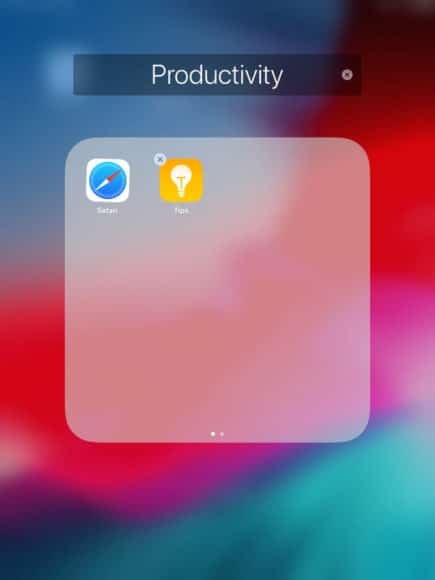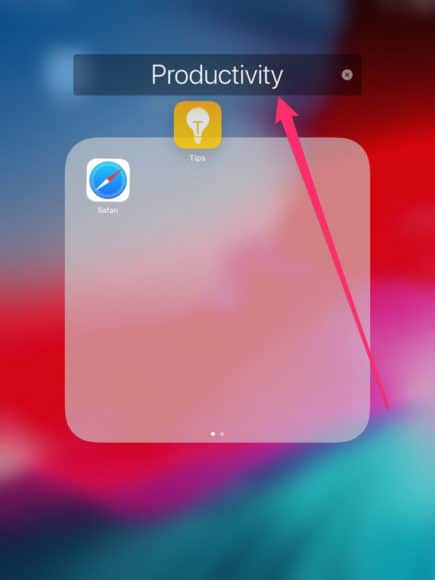Having the home screen of your PC so cluttered with files and programs to the point of you being unable to see the background is frustrating and annoying. This is where the hard drive and the folders inside it should step in, right? True.
You Might Also Want To Read: How Do I Remove The Password From My iPad?
However, with your iPad, the organizational options that you will have access to on your PC will not be available. But that it is not to say you have to fill up those several home screens with various applications that you regularly use than really engaging with software.
To solve the issue, simply create folders on your iOS device and group apps logically. This will preserve your time and take away the frustration. Let’s break down How To Create A Folder On Your iPad?:
How Can I Create A Folder On My iPad?
- Begin by identifying 2 applications that you want to be one folder together and hold a finger down on one until it starts wiggling (and shows an “X” in the corner). In iOS 13 or later, press on the application you would wish to create a folder with till a menu is visible. Choose “Rearrange Apps” from the list.
- Drag that application on top of the second, and then release.
- A folder will immediately be created and be displayed with a suggested title. You are allowed to accept it or click the title to enter yours.
You Might Also Want To Read- How to Quickly Switch Between Gmail Accounts on Android, iPhone, and iPad
- Now, the same technique can be used to drag other applications into the folder.
And if you ever wish to get rid of the folder, simply drag all the apps out of it. When the last one is deleted, the folder will vanish.
More Information About Your iPad
iPad is a line of tablet computers designed, developed and marketed by Apple Inc., which run the iOS and iPadOS mobile operating systems. The first iPad was released on April 3, 2010; the most recent iPad models are the sixth-generation iPad, released on March 27, 2018; the fifth-generation iPad mini, released on March 18, 2019; the third-generation iPad Air, released on March 18, 2019; and the 11-inch (280 mm) and third-generation 12.9-inch (330 mm) iPad Pro, released on November 7, 2018.
As of May 2017, Apple has sold more than 360 million iPads, though sales peaked in 2013. It is the most popular tablet computer by sales as of the second quarter of 2018.
The user interface is built around the device’s multi-touch screen, including a virtual keyboard. All iPads can connect via Wi-Fi; some models also have cellular connectivity. iPads can shoot video, take photos, play music, and perform Internet functions such as web-browsing and emailing. Other functions – games, reference, GPS navigation, social networking, etc. – can be enabled by downloading and installing apps. As of March 2016, the App Store has more than million apps for the iPad by Apple and third parties.
There have been nine versions of the iPad. The first generation established design precedents, some of which have persisted through all models. The 2nd-generation iPad (iPad 2) introduced a new thinner design, a dual-core Apple A5 processor, and VGA front-facing and 720p rear-facing cameras designed for FaceTime video calling. The third generation added a Retina Display, the new Apple A5X processor with a quad-core graphics processor, a 5-megapixel camera, HD 1080p video recording, voice dictation, and 4G (LTE). The fourth generation added the Apple A6X processor and replaced the 30-pin connector with an all-digital Lightning connector. The iPad Air added the Apple A7 processor and the Apple M7 motion coprocessor, and reduced the thickness for the first time since the iPad 2. The iPad Air 2 added the Apple A8X processor, the Apple M8 motion coprocessor, an 8-megapixel camera, and the Touch ID fingerprint sensor; and further reduced the thickness. The iPad introduced in 2024 added the Apple A9 processor, while sacrificing some of the improvements the iPad Air 2 introduced in exchange for a lower launch price. In 2018, Apple released a 2018 model of iPad with Apple A10 Fusion processor and Apple Pencil support. A year later, the 2019 iPad Air is released, with 10.5-inch display and Apple A12 chip.
There have been five versions of the iPad Mini, all of which have a screen size of 7.9 inches (20 cm). The first generation has similar internal specifications to the iPad 2 but uses the Lightning connector instead. The iPad Mini 2 added the Retina Display, the Apple A7 processor, and the Apple M7 motion coprocessor, closely matching the internal specifications of the iPad Air. The iPad Mini 3 added the Touch ID fingerprint sensor. The iPad Mini 4 features the Apple A8 and the Apple M8 motion coprocessor. The 5th generation features the Apple A12 SoC.
There have been three generations of the iPad Pro. The first generation came with 9.7″ and 12.9″ screen sizes, while the second came with 10.5″ and 12.9″ sizes, and the third with 11″ and 12.9″ sizes. The iPad Pros have unique features such as the Smart Connector, which are exclusive to this series of iPads.



